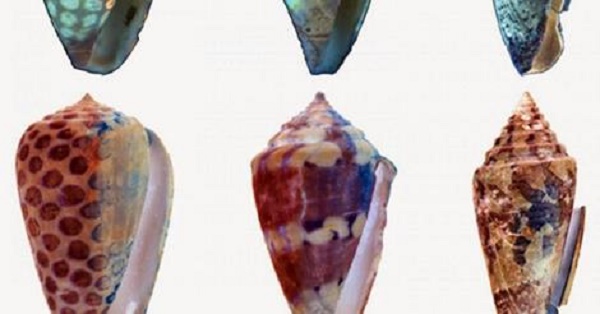The study of 30 ancient seashells using UV lights has revealed that they had stunning colors, polka dot, and many other colorful patterns. They were extremely attractive.
The 4.8 to 6.6 million-year-old seashell fossils look white in normal light. But when UV light is applied, they show their original, stunning colors.
"The fossil record of the clade remains poorly understood, particularly within an evolutionary framework," the Public Library Of Science (PLOS) researchers said.
It seems that the seashells were as amazing as abstract art. Under UV lights, the organic matter fluoresces and the shells appear quite close to their original looks. The findings are nothing less than amazing for nature enthusiasts.
However, the researchers do not know which specific compounds are emitting the lights under the UV rays, according to HNGN.
"This study allows comparisons to be made between cone snail diversity patterns on modern and fossil coral reef systems for the first time," says Jonathan Hendricks, study author and geologist from San Jose State University.
Hendricks studied as much as 350 shells from 28 different cone shell species collected from the Dominican Republic in the 1970s.
13 species from the 350 studied were found to be new, previously unknown species. But, unfortunately, the shells that had amazing Polka dot patterns are now extinct, Tech Times reported.
The tropical waters of the world's oceans contain the Cone snails that have distinctive cone-shaped shells.
They split venom to paralyze their prey, and they can sting humans. The venom of the largest species is dangerous, and can be fatal, to humans.
The danger shells have is far less engaging than what their ancient patterns were. The PLOS study may also reveal some groundbreaking information about the seashells.
The UV rays may be harmful for the human skin and therefore must be used under lab conditions. Sunlight contains UV rays but the ozone layer blocks most of the radiation from reaching the ground.
This study can surely inspire scientists to intensify the research.


